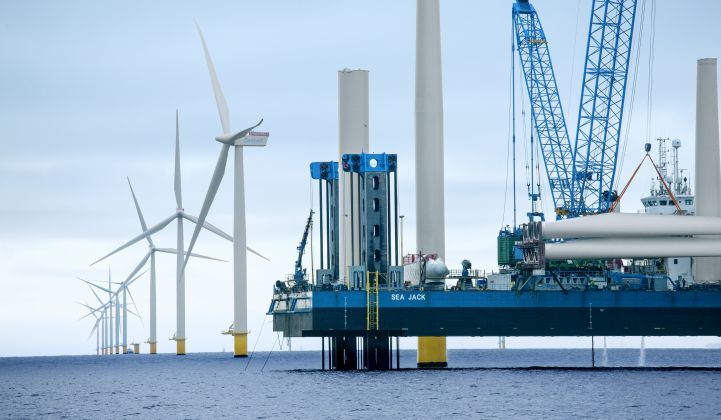Denmark’s Ørsted won New Jersey’s first offshore wind solicitation with a 1.1-gigawatt project known as Ocean Wind, the largest offshore wind project to secure a development deal with a U.S. state to date.
Ocean Wind will be built 15 miles from the Atlantic City coast, with construction expected to begin in the early 2020s and finish in 2024.
The New Jersey Board of Public Utilities said Ørsted will receive offshore renewable energy certificates* worth $98.10 per megawatt-hour in the project’s first year of operation, lifting the average residential customer’s monthly bill by $1.46. The project will generate enough renewable power for the equivalent of half a million homes.
Three development groups bid into New Jersey’s solicitation: Norway’s Equinor; Atlantic Shores Offshore Wind, a joint venture of EDF Renewable Energy and Shell New Energies; and Ørsted.
After losing to Vineyard Wind last year in Massachusetts' first offshore wind solicitation, Ørsted acquired pioneering developer Deepwater Wind for $510 million, giving it the largest footprint in the U.S. market — with off-take deals in place in New York, Connecticut, Rhode Island and Maryland. New Jersey is now added to that list.
Ørsted is also developing a demonstration project off Virginia in partnership with utility Dominion Energy, and owns the 30-megawatt Block Island Wind Farm, the only U.S. offshore wind project currently in operation.
"We took the loss in Massachusetts as a lesson learned," said Thomas Brostrøm, president of Ørsted North America, in an interview. "We put a very strong proposal into New Jersey, and getting awarded 1,100 megawatts right out of the gate is massive for our growth in the U.S."
Ørsted is the world's leading developer and operator of offshore wind projects, active in Europe, the U.S and Asia. Ocean Wind is also backed by New Jersey utility group PSEG, which will provide energy management services and potentially lease land for onshore aspects of the project. PSEG has an option to become an equity investor in the project.
"The U.S. offshore market is really starting to consolidate around Ørsted at this point," said Anthony Logan, senior analyst for wind power at Wood Mackenzie Power & Renewables.
"Now that they have the vast majority of all the contracts, they have the power of scale for negotiating some of their [equipment] contracts, and incentivizing big decisions like vessel construction or some of the other big upgrades needed for the sector as a whole," Logan added.
Supply chain decisions coming
With New Jersey's winner now chosen, speculation will turn to how the project's supply chain will shape up.
Massachusetts stole a march in the U.S. market by investing early in an offshore wind-tailored facility in New Bedford, and last year awarded Vineyard its 800-megawatt project. MHI Vestas will supply turbines for that project.
New Jersey’s BPU said Ørsted won partly on the basis of having the most detailed plans for economic development in the state, including the strongest guarantees around local content and manufacturing. Among other commitments, Ørsted plans to open an operations and maintenance base for the project in Atlantic City.
Brostrøm said it's too early to get into the details of the supply contracts for Ocean Wind. "We need to spend another couple of years getting all the permits we need to start offshore construction," he said.
New Jersey has several port facilities seen as promising candidates for offshore wind work — notably the recently revamped Paulsboro downriver from Philadelphia, which is the first marine terminal to be built along the Delaware River in 50 years.
New Jersey is competing with a number of states in New England and the Mid-Atlantic region for future offshore wind jobs and investment. Connecticut is investing alongside Ørsted in its port facilities in New London, while New York, which has its own 800-megawatt offshore wind solicitation underway, has pledged $200 million towards upgrading its seaside infrastructure.
Both New Jersey and New York rushed their first solicitations to allow the winning developers to take advantage of the federal investment tax credit before it phases out, helping to lower the cost to ratepayers.
New Jersey has a 3.5-gigawatt offshore wind target for 2030, while New York has recently upped its target to 9 gigawatts by 2035. New Jersey is expected to launch two more solicitations, for 1.2 gigawatts each, in 2020 and 2022.
“Today’s historic announcement will revolutionize the offshore wind industry here in New Jersey and along the entire East Coast,” New Jersey Governor Phil Murphy said in a statement.
*Correction: The article originally said the project will receive Offshore Renewable Energy Credits. In fact, it will receive Offshore Renewable Energy Certificates.




